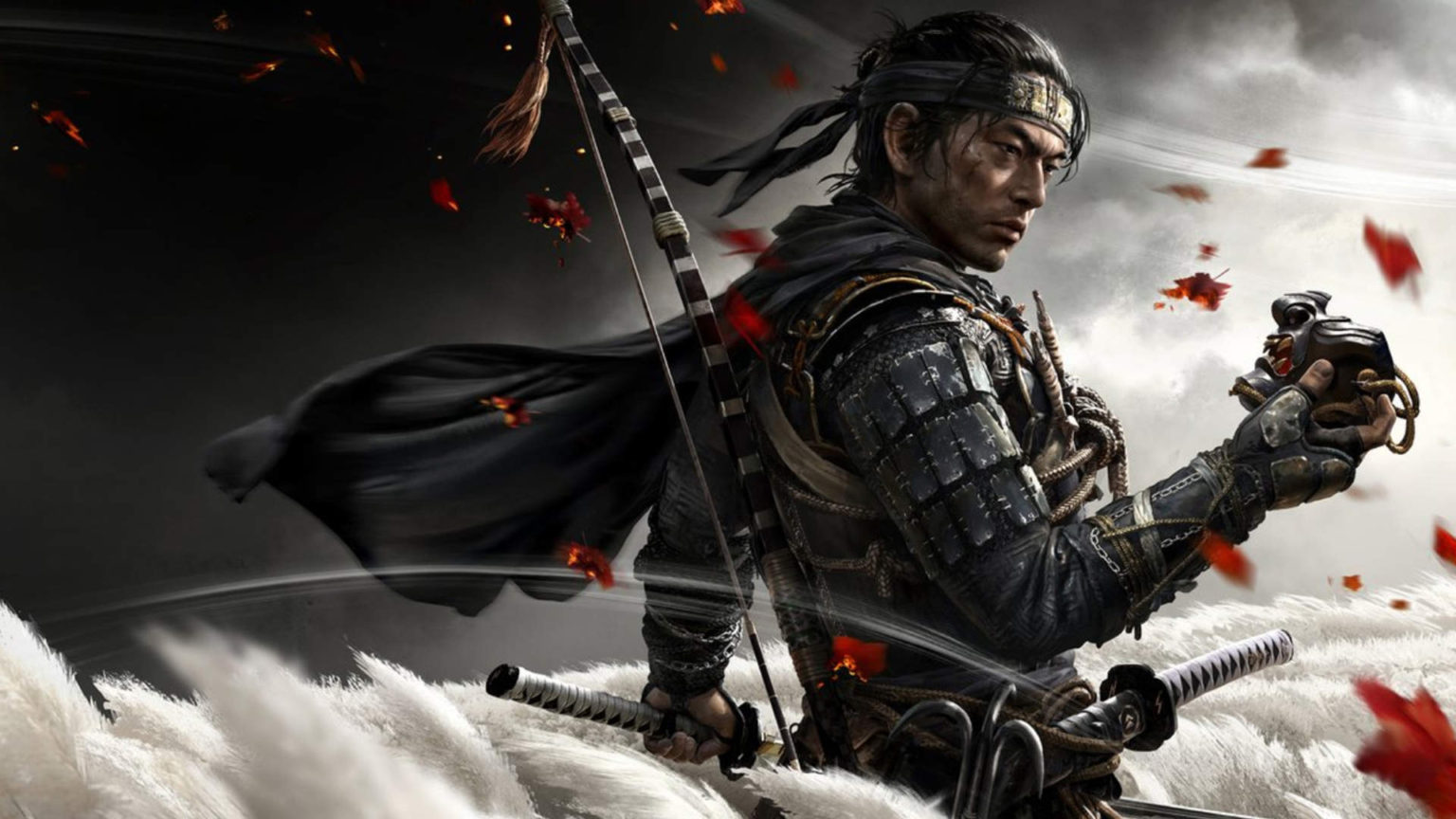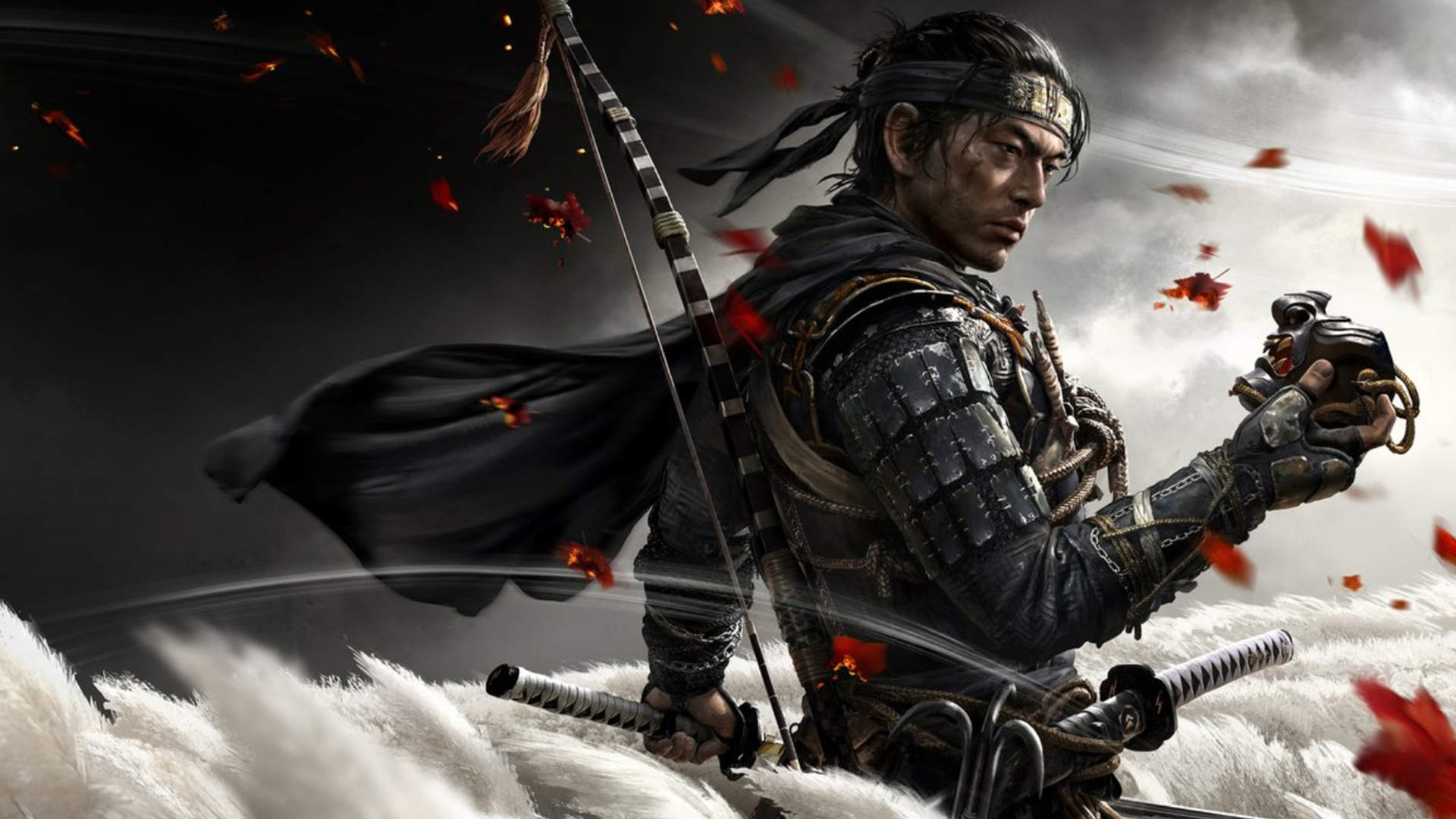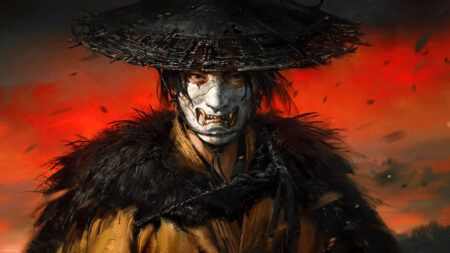The Code of Honor is absolute. One must abide by the highest of its ideals, without compromise. You must be able to control every aspect of your being. Steel yourself. So when the time comes, you will not hesitate. That is what it means to be Samurai. By becoming the living embodiment of the code, there is no enemy that you cannot defeat.
Except, the Mongols are not common bandits. They will not honor your code, and their ruthlessness will leave you in awe. What’s worse is the fact that this enemy knows more about you than you know about yourself. He is able to beat you in ways you never thought possible. There is no way to win. Not unless you’re willing to be… more.
Shifting sands are awry. Dancing flames flicker all night. The darkness beckons.
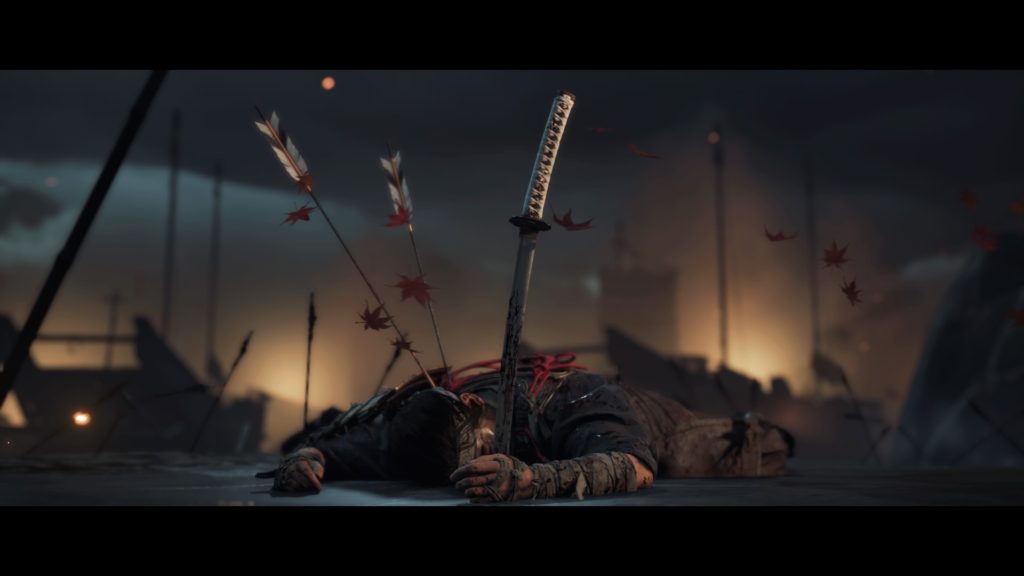
Captured on a standard PS4.
Ghost of Tsushima is an open-world action-adventure game set in Tsushima island during the initial Mongol invasion of the 1270s. Players take control of Jin Sakai, a samurai from clan Sakai. He witnesses first hand that Samurai spirit alone is not enough to overcome the Mongols. Though he was supposed to die, Jin continues to fight as the Ghost. His legend will spread like wildfire, inspiring the people of Tsushima and haunt the dreams of his enemies.
The island of Tsushima is a beautiful place, full of natural life and steeped in tradition. When not on missions critical to the island’s survival, the Ghost is able to explore the surrounding areas. The only limiting factor is the Mongol forces that prevent movement further North of the island. Reclaiming castles will open a new area of the map to explore, along with more powerful enemies to face.
Jin’s epic adventure first starts with the rescue of his uncle from Castle Kaneda, and ends with a tragic death. Along the way, Jin encounters a myriad of people. They all have suffered greatly at the hands of the Mongols. But not all of them share in Jin’s vision of a liberated Tsushima. In the end, the Ghost becomes a feared figure, not only by the Mongols but by his own people as well. But the Ghost must put aside everything in order to do what needs to be done.
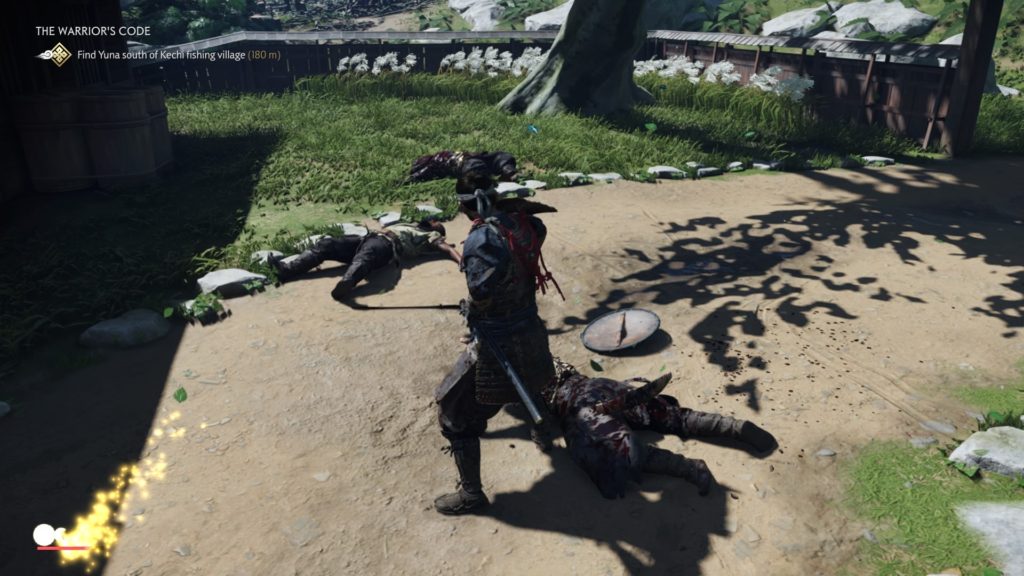
Taking back the island is no simple task. The people are already scared. Most are in danger of getting caught up in the fighting. There’s nothing for them to do but to keep on the move. Others hideaway in the wilderness, looking for any means of weathering the storm. The worst of worst prey on their fellow islanders – taking whatever they can, and leaving the dead to rot.
The people of Tsushima need a symbol to get behind. Unfortunately, a single surviving samurai from a lost battle is not enough to inspire victory. A vengeful samurai spirit, however, is the perfect symbol for the slain of Tsushima. Not only does the Ghost inspire hope, but he also spreads fear among the Mongols.
All throughout his journey, Jin will encounter many allies who will aid him in resisting the Mongols. But the most prominent of them are too distracted by personal issues to fully commit to the cause. These individuals will have Tales of their own that need the Ghost’s help to resolve them. As more of these tales are told across the island, the Ghost’s legend grows. Strengthening him in the process.
Tales come in many forms besides Companion Tales, there are Mythical Tales and Tales of Tsushima as well. One important thing to note is that completing companion quests progresses the main story. The other quests are simply there should you wish to acquire a new piece of equipment or resources towards leveling up your current gear.
You can start a Mythical tale or a Tale of Tsushima at any given time. But let’s be honest here… if you’re anything like me, I’d be dead serious about seeing a Tale to its completion. It’d be wrong to just leave it hanging there. And besides, I have long operated on the notion that if I don’t start this side-mission now, I might never come back to it. Sounds crazy nowadays, but there was once a time when you can legit entire quests line all because you feel like progressing the story. And I’ll leave it at that.
Mythical Tales are labors in and of themselves. But the rewards for completing them are well worth the effort. By completing Mythical Tales, Jin acquires long lost techniques and retrieve armors belonging to the heroes of Tsushima. Generally, Mythical Tales are multi-part quests that require the player to go to several locations.. and do stuff there. I can’t deny that the idea itself is boring. But when I really think about it, I’m going to get something that’ll open up a new way of playing the game… the thought alone is enough to drive me forward.
On the other side, Tales of Tsushima are the people’s tales. It is a mix of hope, despair, and every emotion in between. Once in a while, an NPC will walk up Jin, and they will air out their grievances. Some missions will require Jin to investigate a scene. This involves looking for clues and following footprints that lead to perpetrators.
Of all the quest types in the game, these are the ones I consider as ‘complete immediately.’ These quests represent little snippets of the bigger picture – the war for Tsushima. Because of their flash-in-a-pan nature, there are no consequences with taking your time. But if the Tale is already underway, I have no reason to not finish it. I guess the most compelling part about these smaller stories is the fact that most of them do not end the way you think it’s going to end. If not for that, I’d consider these minor quests to be nothing of note.
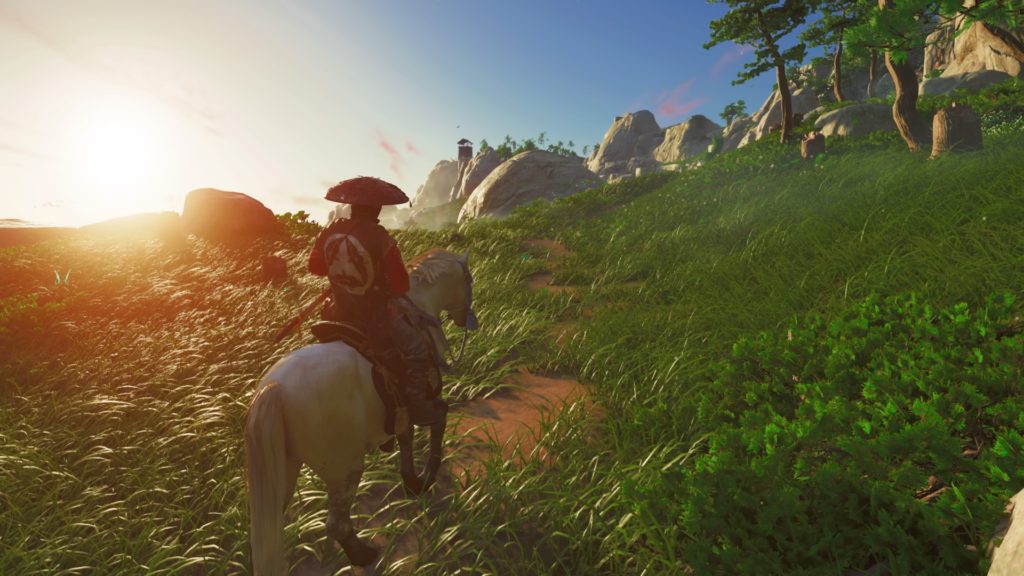
The island of Tsushima is more than just a battlefield where people die in. It also houses many wonders, both natural and man-made. Long neglected Shinto Shrines lay hidden throughout the island. Those brave enough to make the climb to their locations are rewarded with a sword charm.
The animals of the island also grant strength to those that respect their domain. Foxes guide the player to Inari Shrines. Offering a prayer grants a boon to Jin’s katana charms. Yellow birds guide the player towards other activities like bamboo strike posts, hot springs, and haiku spots.
Striking bamboo will increase Jin’s pool of Resolve. Visiting hot springs will allow Jin to reflect on past actions, and increase his health at the same time. The act of composing haiku is already calming enough. It also comes with a new bandanna for Jin to wear into battle. But there’s more to the island than just points of interest; it also provides to the war effort.
There are a variety of resource types and collectibles that the player can acquire. Most resources go to the upgrade of Jin’s current set of weapons and armor. The only exception, flowers, are used to purchase color variants for said armor and weapons. A diligent samurai can find everything he needs to become more powerful by completing Tales and searching enemy camps.
Shashimono banners, singing crickets, Mongol artifacts, and record rounds out the rest of the collectibles. Additionally, the player may turn in banners for new horse saddles. And collecting singing crickets will allow Jin to learn new weather altering flute songs.
Mongols control the majority of the roads. Their presence can be felt most prominently around major roads and strategic positions. During most encounters, the player can choose between challenging enemies head-on, or taking the sneaky route, eliminating enemies one by one. If the encampment is large enough, a Mongol commander is most certainly there. Killing him goes a long way in building the Ghost’s legend. In the end, the objective is to burn strongholds to the ground, and thus returning the land to refugees.
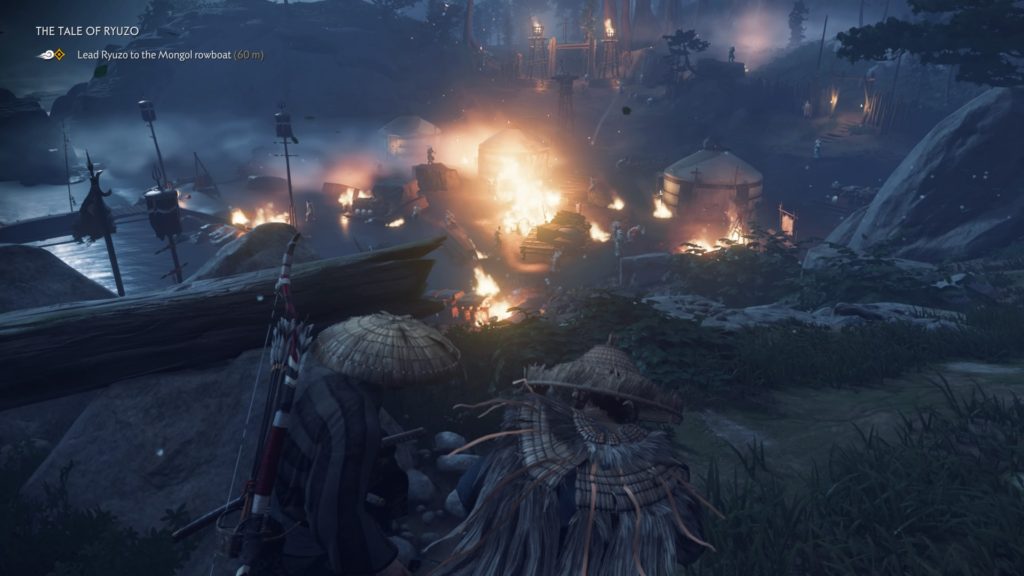
The player controls Jin like in most open-world games, through 3rd person controls. In time, Jin acquires tools that’ll allow him to explore the island even further. When the journey requires him to cover a great distance, he has his trusty stead. One swipe on the touchpad is all it takes to summon him to your side. With that being said, Tsushima island hosts a lot of vertical areas. Successfully traversing its mountain and hills, requires a keen eye in order to spot handholds and short cuts.
To combat the Mongols through force of arms, Jin draws strength from his samurai training. He is able to take up 1 of 4 stances at any given situation. The stances themselves counter an infantry type that carries a specific weapon. The stances themselves do not hard counter any specific class. Rather, it allows Jin to perform different kinds of attacks that do Stagger damage more efficiently than others. Learning new stances requires the player to eliminate Mongol commanders. Knowing all 4 stances will increase Jin’s general combat effectiveness.
When approaching enemies, Jin can start a standoff. Essentially calling out the biggest badass among the group. Both parties wait for the last possible second to strike. Should Jin fall for a feint or wait too long, the enemy inflicts critical damage. Winning a standoff results in one less enemy for the upcoming battle. Proving your strength might also cause enemies to flee for their lives.
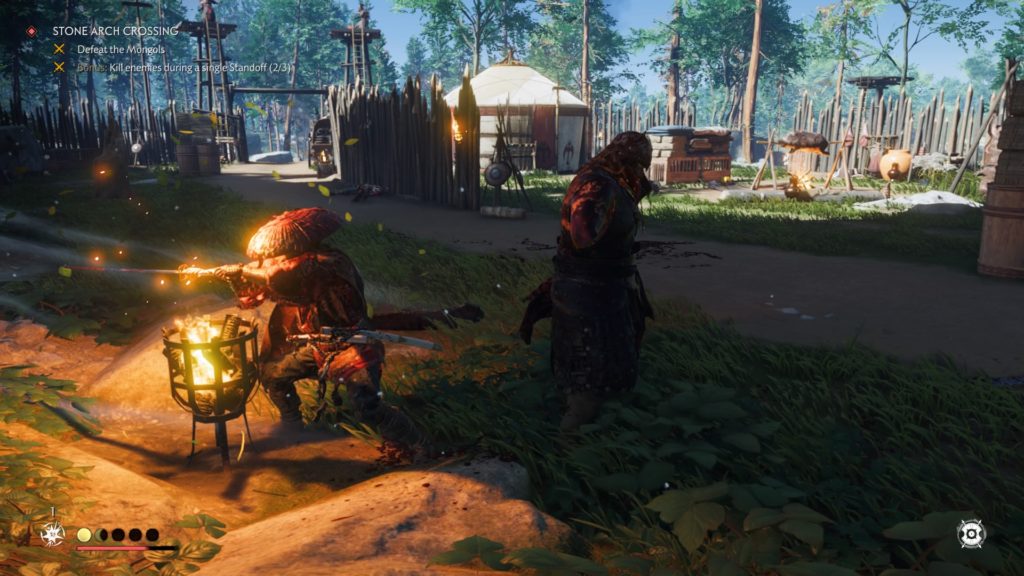
Of course, the force of arms alone is not enough to topple the Mongols. Sometimes fear is a more effective weapon than the sharpest of blades. The Ghost is capable of utilizing stealth in ways that dishonor his samurai upbringings. But the enemy’s strength alone makes these dishonorable tactics a necessity.
When in trouble, the Ghost is able to use ghost weapons to even out the odds in his favor. His weapons range from kunai to explosives. All his weapons are meant to inspire fear within his foes. To the samurai, fear is the weapon of the cowardly. But the Mongols are more than deserving of fear and carnage. Fear is the currency of the Ghost. The more his enemies give in to it, the more powerful he becomes. When the Ghost comes to collect, he will not be denied.
Sometimes an enemy will request for Jin for a duel. As a matter of personal honor, Jin will refrain from using any ghost weapons. He must prove his strength by besting his opponent in the arena of honorable combat. The game switches to a 3D fighting game, of sorts. The player may use stances as the situation demands, effectively using attacks that break the enemy’s defense. There is a greater emphasis on blocking and parrying.
Duels are intense to the point that you are almost relying exclusively on reflexes. With no exits around, it’s an all or nothing affair.
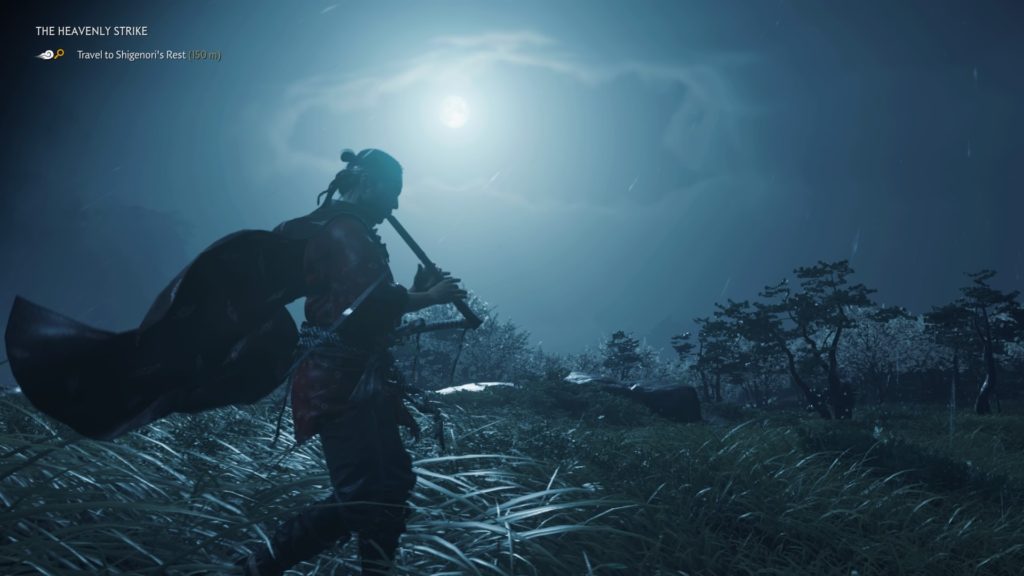
With all the major mechanics done with, let’s talk about this game’s visuals. I’ve got to hand to Sucker Punch for this one. The visuals are on a whole different level here. The environments are vibrant and full of life. Elements like the day and night lighting are so carefully crafted. Much like the beautifully rendered pampas grass. Furthermore, with how well everything acts with the shifting winds is a testament to the team’s remarkable work on the game’s engine.
The game’s in-game cinematics are almost on par with the game’s actual cinematics. They are so close in quality that I, in fact, can’t tell the difference at times. Character animations and reactions are so carefully put together that it’s hard to dismiss many scenes as mere dialogue spoken for exposition’s sake. The same can also be said about the villagers’ varied animations. Their life-like actions complete a picture of feudal Japan that one can only see in movies.
Unfortunately, that’s one of the game’s greatest weaknesses. As great as many of the animations are when they work… it bothers me when something breaks during one of these carefully planned exchanges. It doesn’t happen, but having something unexpected happen like arms moving in unnatural ways, really breaks the immersion of the scene.
There no need for much in the way of background music. Tranquil moments are complimented by the wind and the chirps of distance birds. Traditional drums and orchestral music emphasize more intense scenes. The music seldom goes above and beyond what’s necessary. There is no need for high energy music when the scene wants to focus on deep and dark matters.
The camera does get in the way sometimes. You would be in the middle of a stand-off, the camera suddenly switches angles, next thing you know, a leaf blocks the screen. It doesn’t happen a lot. But it’s happened enough times that it warrants some attention. Other times, the camera gets behind structures and walls. This is particularly annoying in large combat encounters.
There was once an instance when after a duel with a Mongol general, the group watching the fight was supposed to have dispersed. Instead, I was animation locked with my horse. Furious moving my analog stick around, I had no choice but to watch as they begin to attack me. As with everything else, there’s always something that needs fixing.
Enemy A.I. can be quite annoying at times. I know that there’s an order to things that they must adhere to make encounters enjoyable and believable. But strictly adhering to those rules is what gets under my skin. Enemies at camp seem to gravitate towards camp. They would intentionally break combat when outside of camp. And would even derp around if their order of attack is somehow broken. I guess it’s asking too much for the devs to add a couple of more safeguards. Things like this do tend to happen to games of a similar genre. I just find it funny in other games.
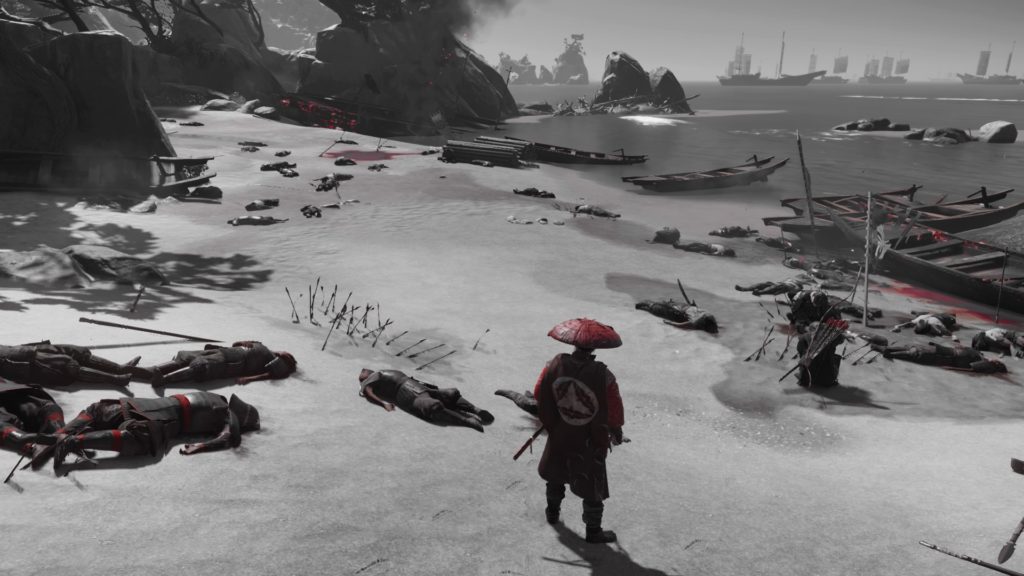
Captured on a standard PS4.
After the initial invasion at Komoda beach, the Mongol horde pushes up North. In their wake, a tidal wave of death and destruction. Jin Sakai, one of the few survivors of the ill-fated defense, finds himself in debt to Yuna, a thief whose only wish is to save her brother from the Mongols.
Khotun Khan understands every aspect of the samurai code. He uses this knowledge to utterly decimate his opponents. The Khan is cunning and ruthless, but he sees the value of taking the local lord, Lord Shimura, hostage.
After going up against the Khan himself, Jin begins to realize that the Code is not enough to defeat this powerful foe. In his heart, Jin knows that the people of Tsushima must be willing to do whatever it takes to defeat them.
And thus, the Ghost, the very symbol of defiance, is born.
Sucker Punch has really outdone themselves with this game. They’ve come a long way from their Sly Cooper days. Jin Sakai, as a character, draws many similarities to one of their other beloved characters – Cole MacGrath. In this case, instead of grappling between good and evil, Jin Sakai grapples with the want to stay within his code of honor… or to toss it away in order to do what needs to be done. As far as I can tell, it’s not as black and white as Cole’s dilemma was, and it reflects on gameplay and beyond.
In terms of actually giving the game actual numbers. I rate this game nearly perfectly on its visuals and sound design. The story is grim at times, but it never loses its spark of hope. A lot of credit goes to the stellar voice acting. It’s as close to a samurai flick as it can be.
The only area of the game I can legit take points out off is in the mechanics and controls. The A.I. in particular needs some more work. And there are some issues with the camera, and how sequences break under certain conditions.
Other than that, I’m finding it very hard to point out any other flaws without being nit-picky. When everything works as intended, I find myself having a hard time putting down the game. The only thing missing at this point is an option to play again through New Game Plus. But knowing Sony, that feature is most likely going to appear sometime in the future.
Ghost of Tsushima is a worthy addition to the pantheon of games under the care of Sucker Punch Productions. This honestly feels like a true return to form from a studio that wavered ever so slightly at the beginning of this generation. Sucker Punch may have stumbled a little at the gates, but with a game like this, they finish strong at the twilight year of this console generation. A full understanding of the system’s strengths and a creative vision that would not compromise for anything, that’s what made the samurai epic, Ghost of Tsushima, possible.



